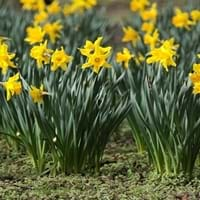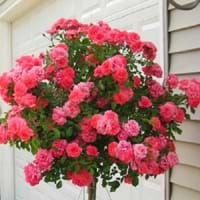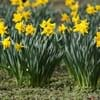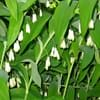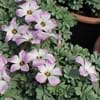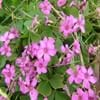Life Span
Perennial
Perennial
Type
Bulb or Corm or Tuber
Perennial
Origin
Hybrid origin
Hybrid origin
Types
narcissus triandricus, narcissus poeticus
Not Available
Number of Varieties
Not Available
Habitat
Hills, Humid climates, meadows
All sorts of environments
USDA Hardiness Zone
4-9
5-9
Sunset Zone
21,22
H1, H2, 6, 7, 8, 9, 12, 13, 14, 15, 16, 17, 18, 19, 20, 21, 22, 23, 24
Habit
Clump-Forming
Upright/Erect
Flower Color
Yellow, Peach
Red, Ivory
Flower Color Modifier
Bicolor
Not Available
Fruit Color
Not Available
Non Fruiting Plant
Leaf Color in Spring
Green
Dark Green
Leaf Color in Summer
Light Green
Dark Green
Leaf Color in Fall
Several shades of Green
Dark Green, Yellow green, Orange Red
Leaf Color in Winter
Light Green
Light Green
Leaf Shape
Linear
Pinnate
Plant Season
Spring
Spring, Summer, Fall
Sunlight
Full Sun, Partial Sun
Full Sun, Partial Sun
Growth Rate
Medium
Medium
Type of Soil
Loam, Sand
Loam, Sand
The pH of Soil
Acidic, Neutral, Alkaline
Acidic, Neutral
Soil Drainage
Well drained
Well drained
Bloom Time
Spring, Late Spring
Spring, Late Spring, Early Summer, Summer, Late Summer, Early Fall, Fall
Repeat Bloomer
No
Not Available
Tolerances
Dry soil, Shallow soil
Drought
Where to Plant?
Container, Ground
Container, Ground, Pot
How to Plant?
From bulbs, Transplanting
Cuttings
Plant Maintenance
Medium
Medium
Watering Requirements
Do not let dry out between waterings, Never Over-water
Average Water Needs
In Summer
Moderate
Lots of watering
In Spring
Less Watering
Moderate
In Winter
Less Watering
Average Water
Soil pH
Acidic, Neutral, Alkaline
Acidic, Neutral
Soil Type
Loam, Sand
Loam, Sand
Soil Drainage Capacity
Well drained
Well drained
Sun Exposure
Full Sun, Partial Sun
Full Sun, Partial Sun
Pruning
Do not prune during shooting season, No pruning needed
Remove damaged leaves, Remove dead branches, Remove dead leaves
Fertilizers
All-Purpose Liquid Fertilizer, as it is a flowering plant, use high phosphorous content fertilizer
All-Purpose Liquid Fertilizer
Pests and Diseases
Caterpillars, Mites, Narcissus Basal Rot, Narcissus Bulb Fly, Viruses
Beetles, Black Spot, Caterpillars, Downy mildew, Mosaic viruses, Powdery mildew, Rust, Scale insects, Thripes
Plant Tolerance
Light Frost
Drought
Flower Petal Number
Single
Double
Edible Fruit
No
Not Available
Foliage Texture
Medium
Medium
Foliage Sheen
Matte
Glossy
Invasive
No
Not Available
Self-Sowing
Yes
Not Available
Attracts
Bees, Birds, Butterflies, Caterpillar, Leaf Hoppers
Birds, Butterflies
Allergy
Diarrhea, Dizziness, Nausea, Vomiting, wheezing
Rash
Aesthetic Uses
Beautification, Bouquets, Decorating walls, Showy Purposes
Showy Purposes
Beauty Benefits
Acne, Skin cleanser
Not Available
Environmental Uses
Provides ground cover
Air purification
Medicinal Uses
Antiseptic, Antispasmodic, Fertility, Joint pain, Wounds
Not Available
Part of Plant Used
Flowers, Leaves
Flowers
Other Uses
Beneficial species for attracting pollinators, Making Perfumes, Showy Purposes
Oil is used in perfume, soaps, creams, etc.
Used As Indoor Plant
Sometimes
Yes
Used As Outdoor Plant
Yes
Yes
Garden Design
Container, Cutflower, Feature Plant, Foundation, Lawns and Turf, Mixed Border, Rock Garden / Wall
Container, Cutflower, Feature Plant, Foundation, Mixed Border, Topiary / Bonsai / Espalier
Botanical Name
NARCISSUS 'Baby Moon'
Rosa Andeli
Common Name
Jonquil, Jonquilla
Double Delight Rose, Hybrid Tea Rose
In Hindi
नरगिस (फूल)
Double Delight Rose
In German
Narzissen
Double Delight Rose
In French
Narcissus
Double Delight Rose
In Spanish
Narcissus
Double Delight Rose
In Greek
Not Available
Double Delight Rose
In Portuguese
Narcissus
Prazer dobro Rosa
In Polish
Narcyz
Double Delight Rose
In Latin
Narcissus
Double Delight Rose
Phylum
Magnoliophyta
Magnoliophyta
Class
Liliopsida
Magnoliopsida
Family
Amaryllidaceae
Rosaceae
Clade
Monocotyledonous
Not Available
Tribe
Not Available
Not Available
Subfamily
Lilioideae
Not Available
Number of Species
Not Available
Properties of Jonquil and Double Delight Rose
Wondering what are the properties of Jonquil and Double Delight Rose? We provide you with everything About Jonquil and Double Delight Rose. Jonquil doesn't have thorns and Double Delight Rose doesn't have thorns. Also Jonquil does not have fragrant flowers. Jonquil has allergic reactions like Diarrhea, Dizziness, Nausea, Vomiting and wheezing and Double Delight Rose has allergic reactions like Diarrhea, Dizziness, Nausea, Vomiting and wheezing. Compare all the properties and characteristics of these two plants. Find out which of these plant can be used as indoor plant. If you are interested to decorate your house and garden, find out aesthetic uses, compare them and select the plant which will beautify your surrounding. Along with beautification, try comparing medicinal and edible uses of Jonquil and Double Delight Rose and you can choose the plant having best and most benefits.
Season and Care of Jonquil and Double Delight Rose
Season and care of Jonquil and Double Delight Rose is important to know. While considering everything about Jonquil and Double Delight Rose Care, growing season is an essential factor. Jonquil season is Spring and Double Delight Rose season is Spring. The type of soil for Jonquil is Loam, Sand and for Double Delight Rose is Loam, Sand while the PH of soil for Jonquil is Acidic, Neutral, Alkaline and for Double Delight Rose is Acidic, Neutral.
Jonquil and Double Delight Rose Physical Information
Jonquil and Double Delight Rose physical information is very important for comparison. Jonquil height is 15.20 cm and width 7.60 cm whereas Double Delight Rose height is 90.00 cm and width 90.00 cm. The color specification of Jonquil and Double Delight Rose are as follows:
Jonquil flower color: Yellow and Peach
Jonquil leaf color: Green
Double Delight Rose flower color: Red and Ivory
- Double Delight Rose leaf color: Dark Green
Care of Jonquil and Double Delight Rose
Care of Jonquil and Double Delight Rose include pruning, fertilizers, watering etc. Jonquil pruning is done Do not prune during shooting season and No pruning needed and Double Delight Rose pruning is done Remove damaged leaves, Remove dead branches and Remove dead leaves. In summer Jonquil needs Moderate and in winter, it needs Less Watering. Whereas, in summer Double Delight Rose needs Lots of watering and in winter, it needs Average Water.
